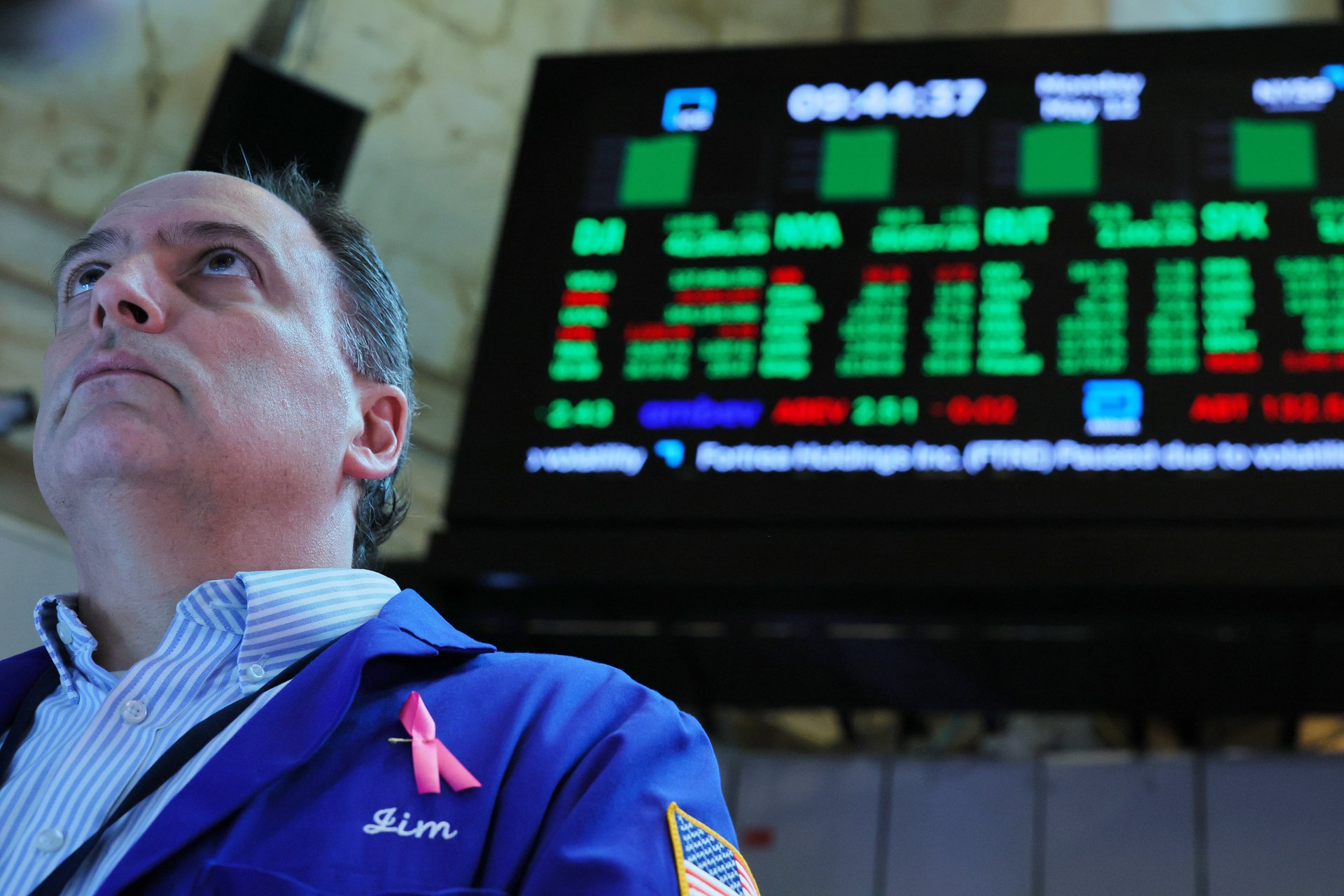This isn't a stock market rally. It's a scramble
Stocks claw their way back to flat and recession fears are fading. But beneath the surface, investor conviction is nowhere to be found

On the back of market rallies over the last few weeks, the Nasdaq is now up just over 1% year-to-date. The S&P 500? Flat. The Dow Jones Industrial Average? Down 0.6%.
Some are cheering the indexes for “making up” the losses triggered by April’s so-called “Liberation Day.” But it all seems like a lot of running to stay in place, especially when factoring in the worsening import-export numbers and the deepening trade deficit, brought on by policies ostensibly aimed at accomplishing the opposite.
And gold, Wall Street’s favorite panic button? It’s up some 20% in 2025.
In first-quarter earnings calls, almst every CEO fell back on some variation of the phrase “macro uncertainty.” Most tried to avoid provoking direct retaliation from the White House, even as subtle pressure mounted in both directions, as if Wall Street and the West Wing were pulling at opposite ends of the same balloon.
So what’s the outlook now?
That depends on who you ask, and when. The Fed remains cautious. Consumer confidence is softening. And while AI-fueled mega-cap enthusiasm keeps juicing parts of the market, small- and mid-cap fundamentals remain murky.
Trade flows are shifting but not clearly in favor of U.S. producers. Even the services surplus, a longtime bright spot in U.S. trade, appears to be slipping as key partners grow wary of erratic negotiations and signal cooling demand for American expertise. In the current environment, fewer international students are looking to study in the U.S., while international tourism numbers are likewise slipping.
As of mid-May, recession fears are fading, at least in the prediction markets. Kalshi traders now peg the chance of a U.S. recession this year at just 37%, down sharply from around 70% in early May. The reversal follows the U.S.-China tariff pause, which investors interpreted as de-escalation, though it mostly restores the status quo. Goldman Sachs (GS) and others have trimmed their recession odds in recent days too, as markets climbed back to flat.
A fresh memo from Jefferies (JEF) on Wednesday morning calls this an “unloved rally,” driven largely by short covering rather than outright bullishness. Just a month ago, positioning in U.S. equities and the dollar was the most bearish since at least 2014, per Jefferies’ data. As tariff headlines improved, investors were forced to unwind bearish bets, pushing stocks higher. Today, positioning is closer to neutral, according to the same analysts, but still underweight by historical standards.
In that light, the rebound looks less like conviction and more like a scramble.
Any calm feels provisional
One surprise could be enough to reroute expectations all over again.
“It just seems like it’s a different story every day,” a former Morgan Stanley (MS) analyst told Quartz. “I don’t know how business leaders can really make any plans when policy changes so much from week to week or even day to day. Hopefully the tariffs stay off. The market reaction shows how important that is.”